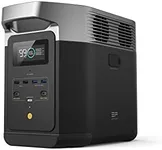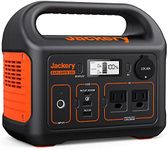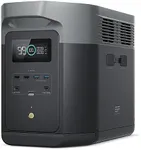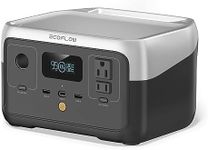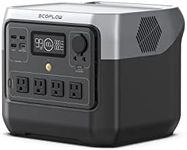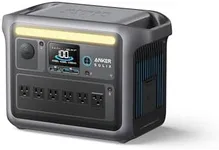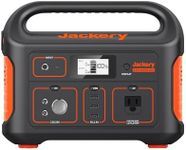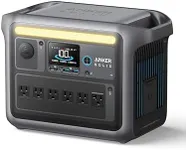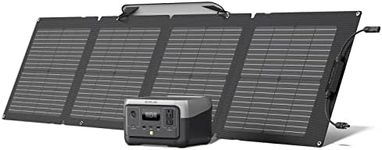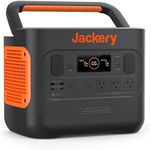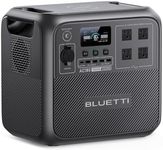Buying Guide for the Best Camping Power Station
Choosing a camping power station is all about matching your power needs with the right features and capacity. These portable devices are designed to keep your gadgets, lights, and small appliances running when you're off the grid. To find the best fit, think about what you want to power, how long you'll be away, and how portable you need the station to be. Understanding the key specifications will help you make a smart choice that keeps your camping experience comfortable and stress-free.Battery Capacity (Wh or mAh)Battery capacity tells you how much energy the power station can store, usually measured in watt-hours (Wh) or milliamp-hours (mAh). This is important because it determines how long you can run or charge your devices before needing to recharge the station itself. Lower capacities (under 300Wh) are good for charging phones, cameras, and small lights for a day or two. Mid-range capacities (300-700Wh) can handle laptops, mini-fridges, and more devices for a weekend trip. High capacities (over 700Wh) are best for longer trips or if you need to power larger appliances. To pick the right one, list what you want to power and for how long, then add up their energy needs to find a suitable capacity.
Output Ports and TypesOutput ports are the ways you connect your devices to the power station, such as USB, AC outlets, and DC carports. This matters because you need the right ports for your gear. Some stations have only USB and DC ports, which are fine for phones and small electronics. Others include AC outlets for laptops or small appliances. If you have a mix of devices, look for a station with multiple port types and enough total ports to charge everything at once. Think about what you’ll bring camping and make sure the station can support all your devices.
Power Output (Wattage)Power output, measured in watts (W), tells you how much power the station can deliver at once. This is important because if you try to run a device that needs more power than the station can provide, it won’t work. Lower output (under 200W) is fine for phones and small gadgets. Mid-range (200-500W) can handle laptops, fans, or small coolers. High output (over 500W) is needed for things like electric grills or larger appliances. Check the wattage requirements of your devices and choose a station that can handle your highest-need item.
Recharge OptionsRecharge options refer to how you can refill the power station’s battery, such as wall outlets, car chargers, or solar panels. This is important for convenience and flexibility, especially on longer trips. Some stations recharge only from the wall, which is fine for short trips. Others support car or solar charging, which is great for extended camping or off-grid use. If you’ll be away from power sources for a while, look for a station that supports solar charging and consider how quickly it can recharge with your chosen method.
Portability (Weight and Size)Portability is about how easy it is to carry and store the power station, which depends on its weight and size. This matters because you’ll need to transport it to your campsite. Smaller, lighter stations are easier to carry but have less capacity. Larger stations offer more power but can be heavy and bulky. If you’re hiking or have limited space, go for a compact model. If you’re car camping and need more power, a larger station may be worth the extra weight.
Safety FeaturesSafety features protect both you and your devices from issues like overcharging, overheating, or short circuits. This is important for peace of mind, especially when using sensitive electronics or leaving the station unattended. Look for stations with built-in protections such as overcurrent, overvoltage, and temperature control. If you plan to use the station in extreme conditions or with expensive gear, prioritize models with strong safety features.
